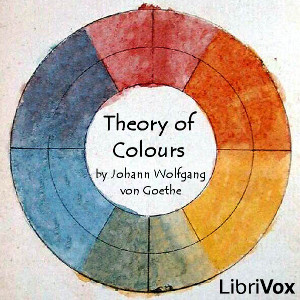-
1
01 - Translator's Preface and Preface to the First Edition
-
2
02 - Introduction
-
3
03 - Part I - Physiological Colours Section 1 - Effects of Light and Dark on the Eye
-
4
04 - Section II - Effects of Black and White Objects on the Eye
-
5
05 - Section III - Grey Surfaces and Objects; Section IV - Dazzling Colourless Objects
-
6
06 - Section V - Coloured Objects
-
7
07 - Section VI - Coloured Shadows
-
8
08 - Section VII - Faint Lights; Section VIII - Subjective Halos
-
9
09 - Pathological Colours - Appendix
-
10
10 - Part 2 - Physical Colours - Section IX - Diotropical Colours
-
11
11 - Section X - Diotropical Colours of the First Class
-
12
12 - Section XI - Diotropical Colours of the Second Class - Refraction
-
13
13 - Subjective Experiments - Section XII - Refraction Without the Appearance of Colour; Section XIII - Conditions of the Appearance of Colour
-
14
14 - Section XIV - Conditions Under Which the Appearance of Colour Increases
-
15
15 - Section XV - Explanation of the Foregoing Phenomena
-
16
16 - Section XVI - Decrease of the Appearance of Colour; Section XVII - Grey Objects Displaced by Refraction
-
17
17 - Section XVIII - Coloured Objects Displaced by Refraction
-
18
18 - Section XIX - Achromatism and Hyperchromatism; Section XX - Advantages of Subjective Experiments. - Transition to the Objective
-
19
19 - Objective Experiments - Section XXI - Refraction Without the Appearance of Colour; Section XXII - Conditions of the Appearance of Colour
-
20
20 - Section XXIII - Conditions of the Increase of Colour; Section XXIV - Explanation of the Foregoing Phenomena
-
21
21 - Section XXV - Decrease of the Appearance of Colour; Section XXVI - Grey Objects ; Section XXVII - Coloured Objects; Section XXVIII - Achromatism and Hyperchromatism
-
22
22 - Section XXIX - Combination of Subjective and Objective Experiments; Section XXX - Transition
-
23
23 - Section XXXI - Catatropical Colours
-
24
24 - Section XXXII - Paroptical Colours
-
25
25 - Section XXXIII - Epoptical Colours
-
26
26 - Part III - Chemical Colours - Section XXXIV - Chemical Contrast
-
27
27 - Section XXXV - White; Section XXXVI - Black; Section XXXVII - First Excitation of Colour
-
28
28 - Section XXXVIII - Augmentation of Colour; Section XXXIX - Culmination; Section XL - Fluctuation; Section XLI - Passage Through the Whole Scale
-
29
29 - Section XLII - Inversion; Section XLIII - Fixation; Section XLIV - Intermixture, Real; Section XLV - Intermixture, Apparent
-
30
30 - Section XLVI - Communication, Actual; Section XLVII - Communication, Apparent
-
31
31 - Section XLVIII - Extraction; Section XLIX - Nomenclature
-
32
32 - Section L - Minerals; Section LI - Plants
-
33
33 - Section LII - Worms, Insects, Fishes; Section LIII - Birds
-
34
34 - Section LIV - Mammalia and Human Beings
-
35
35 - Section LV - Physical and Chemical Effects of the Transmission of Light Through Coloured Mediums; Section LVI - Chemical Effect in Dioptrical Achromatism;
-
36
36 - Part IV - General Characteristics
-
37
37 - Part V - Relation to Other Pursuits
-
38
38 - Part VI - Effect of Colour With Reference to Moral Associations; Yellow; Red-Yellow; Yellow-Red; Blue; Red-Blue; Red; Green
-
39
39 - Completeness and Harmony; Yellow and Blue; Yellow and Red; Blue and Red; Yellow-Red and Blue-Red; Combinations Non-Characteristic; Relations of the Combinations to Light and Dark; Considerations Derived from the Evidence of Experience and History
-
40
40 - Aesthetic Influence; Chiaro-Scuro; Tendency to Colour; Keeping; Colour in General Nature; Characteristic Colouring
-
41
41 - Harmonious Colouring; Genuine Tone; False Tone; Weak Colouring; The Motley; Dread of Theory; Ultimate Aim; Grounds; Pigments
-
42
42 - Allegorical, Symbolic, Mystical Application of Color; Concluding Observations
